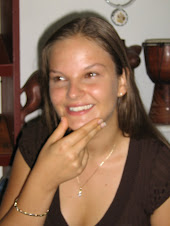The reports on the celebration of the carnival in the Puerto Plata city, they date from ends of the 19th century, and its festivity with the arrival of Cuban immigrants was enriched at the beginning of the 20th century.
The central personage is the devil cojuelo, that in Puerto Plata he becomes Taimáscaro, that produces deities Taínas in its masks, with a beautiful suit where elements of the Spanish culture they are symbolized and the African essences, in multicolored tapes in its arms, and all that is complemented with the conches of the Atlantic ocean, as natural elements of identity of the town Puertoplateño.
These festivities are celebrated during all the month of February and March, in the avenue of the Jetty and the streets of the city. Where, the people and adult they entertain and they enjoy the parades of disguises, the music, the popular dances and the different demonstrations of the art and the culture represented in the carnival that reflects our cultural identity.
Each year the organizers of the carnival, they choose the King Momo, that represents the person of the city that more has fought for maintaining its traditions. 4,2. Victorian architecture The Puerto Plata city is characterized for their architecture in which dominates a Victorian called style, where they converge various architectural styles, giving him a various character to the process of urban development development. Inside this variety is the old style related to the colonial epoch, of which remains as an example the Fortress San Felipe.
Then developed the Victorian model, because of the French, Italian, German, English immigrations and other European countries, which began after the War Restorer and had its height to ends of the 19th century and starts of the XX. This style was utilized in dwellings and in buildings destined to social activities. This type of construction gives an own image to the province.
Finally, it develops in Puerto Plata a modern architecture, because of the American occupation (1916 and 1924) and continued under it was of Trujillo, based on constructions of blocks and cement. Currently with the tourist boom has developed a new architecture based on the environments.
Currently, the municipality of San Felipe of Puerto Plata counts on 182 Educational Centers of which the 67% corresponds to the public sector and the 39% to the private sector.
This municipality counts on a total of 29.279 students, of them 1.567 corresponds at the Initial level, 19.395 at the Basic level, 6642 at the Medium level, 1.505 students to the subsystem of adults, 84 students of special education and 86 of the labor school.

Besides the universities fours operation counts on itself that offer different careers of technical and upper degree. Said universities are: Pontificia Universidad Católica Madre y Maestra (PUCAMM), Universidad Dominicana O & M, universidad Tecnológica de Santiago (UTESA) y el Centro Universitario Regional del Atlántico de la Universidad Autónoma de Santo Domingo (CURA- UASD).

No comments:
Post a Comment